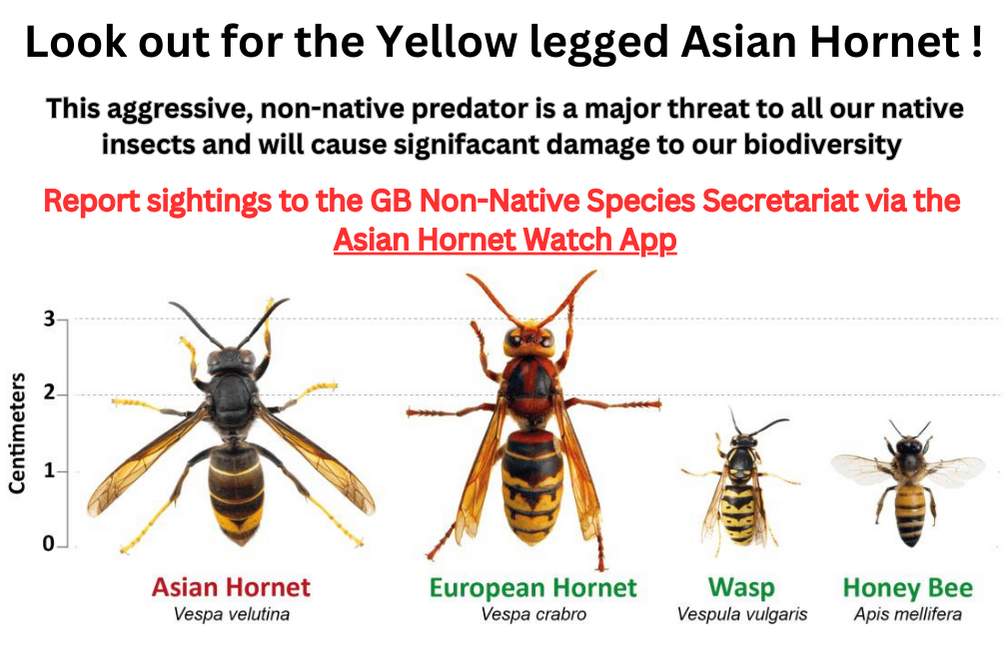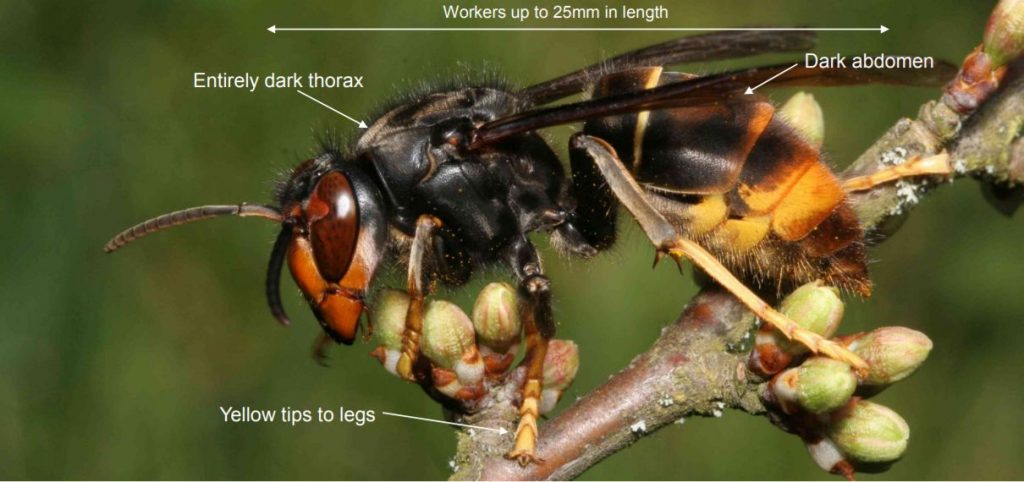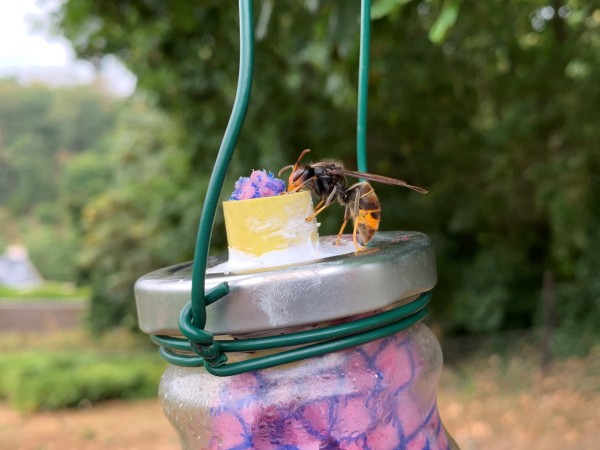
Vespa velutina nigrithorax
A single Yellow-Legged Asian hornet queen arrived in France around 2004, an accidental import from China.
The insect has since invaded many parts of Western Europe and had a devastating effect on the ecology in a number of countries
Learn to identify the Asian Hornet
* Legs brown with characteristic yellow ends
* Abdomen black / brown , fourth segment yellow / orange
* Workers up to 25mm long
* Smaller than European Hornet
More details at the BBKA Asian Hornet Website

Asian hornets are a non-native invasive predator of medium to large insects. They pose a serious threat to our native pollinators and, throughout the summer, honey bees can make up a substantial part of their diet as they build their nests up to several thousand individuals.
Animal and Plant Health Agency, DEFRA, UK GOV
A highly aggressive predator which poses a significant threat to honey bees and all native insects – it has no natural predators in the UK
An average nest can consume over 11kg of insects in one year
A single Yellow-Legged Asian hornet can consume 30-50 honey bees in a day
They were first discovered in the UK in 2016
Between 2016 and 2022 there were 23 confirmed sightings in the UK, including 13 nests
In 2023 there were 72 nests found in 56 locations – more than the previous six years combined.
If allowed to establish, they could permanently alter the food chain in the UK

What can you do
Monitoring stations need to be out from 1st March to the 31st of October. Asian Hornet queens start flying early. Check ‘Monitoring for the Presence of Yellow Legged Asian Hornet Vespa Velutina (YLH)’ for how to make a bait station and monitor for the YLH.
Get the latest Asian hornet news stories, sent straight to your WhatsApp on your computer- all you need to do is click Join THE BBKA Asian Hornet Whatsapp Group
Join the Guildford Asian Hornet Action Team we need you help to monitor and verify possible sightings. Please Contact Rebecca Davis 07702 977675 to find out more.
Download the App
Be ready to report a sighting – download the Asian Hornet Watch App to your phone, it will help you identify this insect and record a sighting.
Scan the QR code with your phone to download the Asian Hornet App

If you think you have seen an Asian Hornet but you are not sure or need help in verifying a sighting:
- Take a photograph if you can.
- Contact Guildford Division action coordinator to help verify:
Rebecca Davis
She will contact the appropriate team member that can visit you as a first response to help confirmation either by trapping a specimen or photographing one.
Action to be taken on confirmed Sighting of Asian Hornet:
- Make a note of where and when it was seen/caught.
- Report to our NBU Seasonal Bee Inspector, (Note the NBU is increasingly requiring evidence, e.g. a photograph or a sample, for a report to be followed up):
Stuart Westsmith
Or, if he is unavailable, report to the Regional Bee Inspector:
Daniel Etheridge
Report to the Non-native Species Secretariat (NNSS) – https://www.nonnativespecies.org (external site) they will take no further action until evidence – a specimen or photograph of the Asian Hornet is produced.
The NBU will require evidence before any official action is taken. All received reports are assessed to verify credibility of each report. The full eradication procedure is not put in motion until a sample has been received and confirmed.